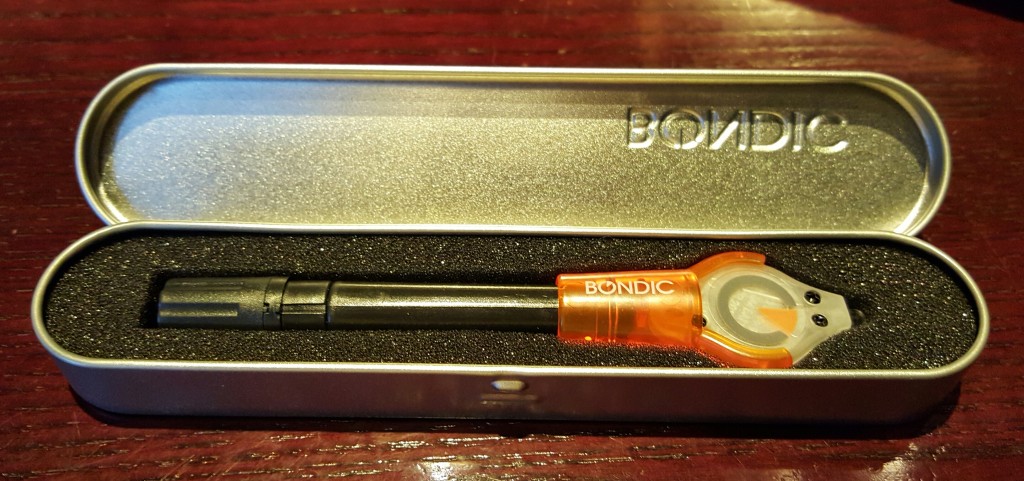It’s rare to have a truly game changing piece of tech that’s stupid cheap ($20-25). But I’ve found exactly that in a product that has finally floated down to the consumer from the industrial sector.
It’s called “Bondic”.
While virtually every person of the planet owns a tube of “superglue”, this may replace it in almost all uses. First, it’s not a glue. It actually welds plastics. Or even dissimilar synthetic materials.
I’m going to list just a few of the differences … you’ll be convinced too.
Your skin will NOT bond together after touching it … so it may not be the best choice for office pranks. It only bonds after a UV light source is introduced.
It will even bond underwater… no kiddin’ folks.
It will fill cracks and fissures, can be layered, sanded, milled, polished, varnished and painted. And since it will fill an opening and be layered, it can behave like a tiny 3D printer to fill gaps in the broken item.
It’s insulating and can even be colored. And we all are aware that when you open a tube of superglue, you do it with the full knowledge that you’ll probably only get one use out of it before it either dries up or seals the top so firmly that only a band saw can remove it. Bondic will last well over a year … and I’ve read that even two years is not out of the question. Maybe even three if still sealed.
This info is directly from the FAQ section of the Bondic website … they have a great description that I don’t think can be improved on:
How is Bondic® Different than other glues or UV cured adhesives?
Glue in principle is an adhesive that allows two fractured parts that fit together perfectly to stick together and become one. However, glue doesn’t replace missing pieces, nor does it provide 3D properties. Glue also cures when exposed to air or in the case you mentioned, UV light and generally requires pressure between two parts to work. Bondic® has adhesive properties but it is essentially plastic in a liquid format, you don’t need perfectly fitting parts for it to work and you can actually fabricate a missing part out of thin air so to speak so it is truly a different category.
This is only a taste of what it’s capable of. To paraphrase Yoda … “space age stuff, this is”.
Using it is simple … put on a few drops and turn on the included UV light for four seconds. Be prepared to be amazed.
I’ve repaired cables headed for the trash with only a couple of drops. The more I use it, the more convinced I am that superglue was designed as some sort of perverse torture device … bonding my fingers together and seemingly everything I glued still wound up breaking.
Beats the heck out of boiling down the talking horse Mr. Ed …….
UPDATE: Seems this tech is getting attention as telemarketers are hawking a copy of Bondic for about half price. Is it exactly the same or will it work as well? Who knows, but realistically there can’t be a huge difference as the principle and use, is exactly alike.
Another UPDATE: I just tried “Lazer Bond” and found it to be almost the exactly the same. I’ve found the liquid a bit more sticky though. A few pluses: Half the bucks of “Bondic” … dries significantly clearer … far better designed UV activating light … much brighter UV light too. Shame it doesn’t have a case of some type to put it into.
« Cooling is cool, or, a cool way to cool To look forward, check the rear view mirror first »

